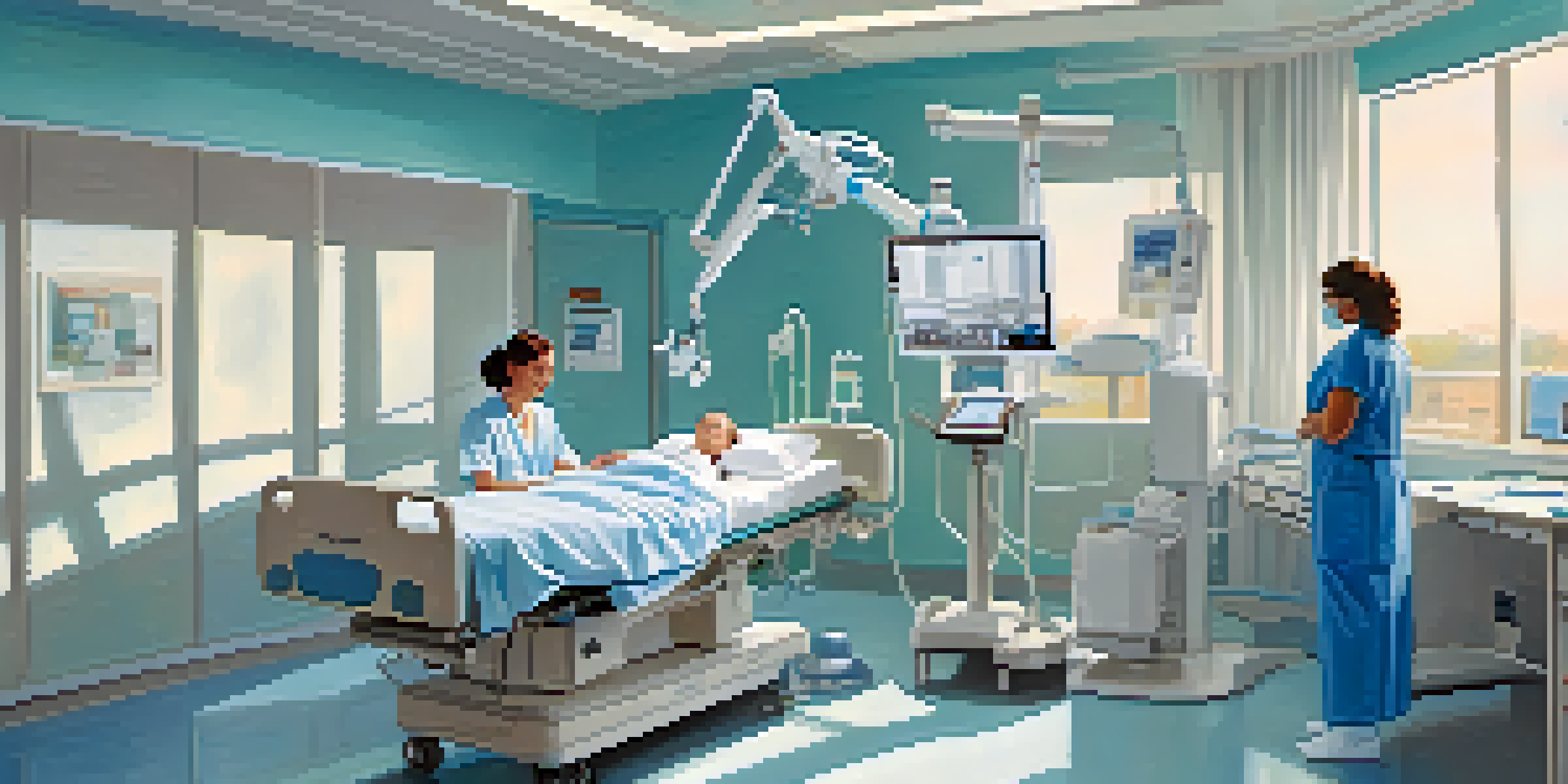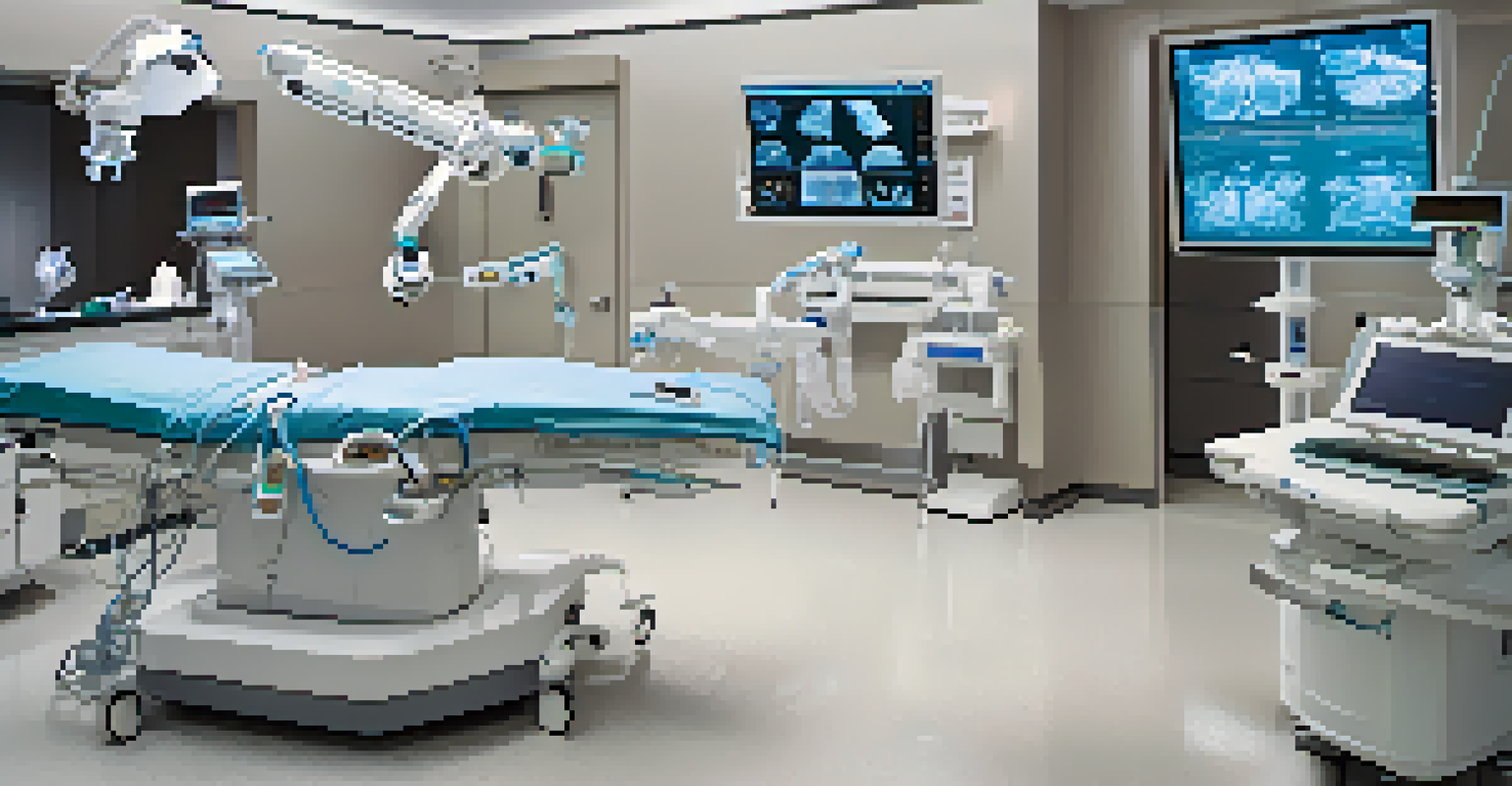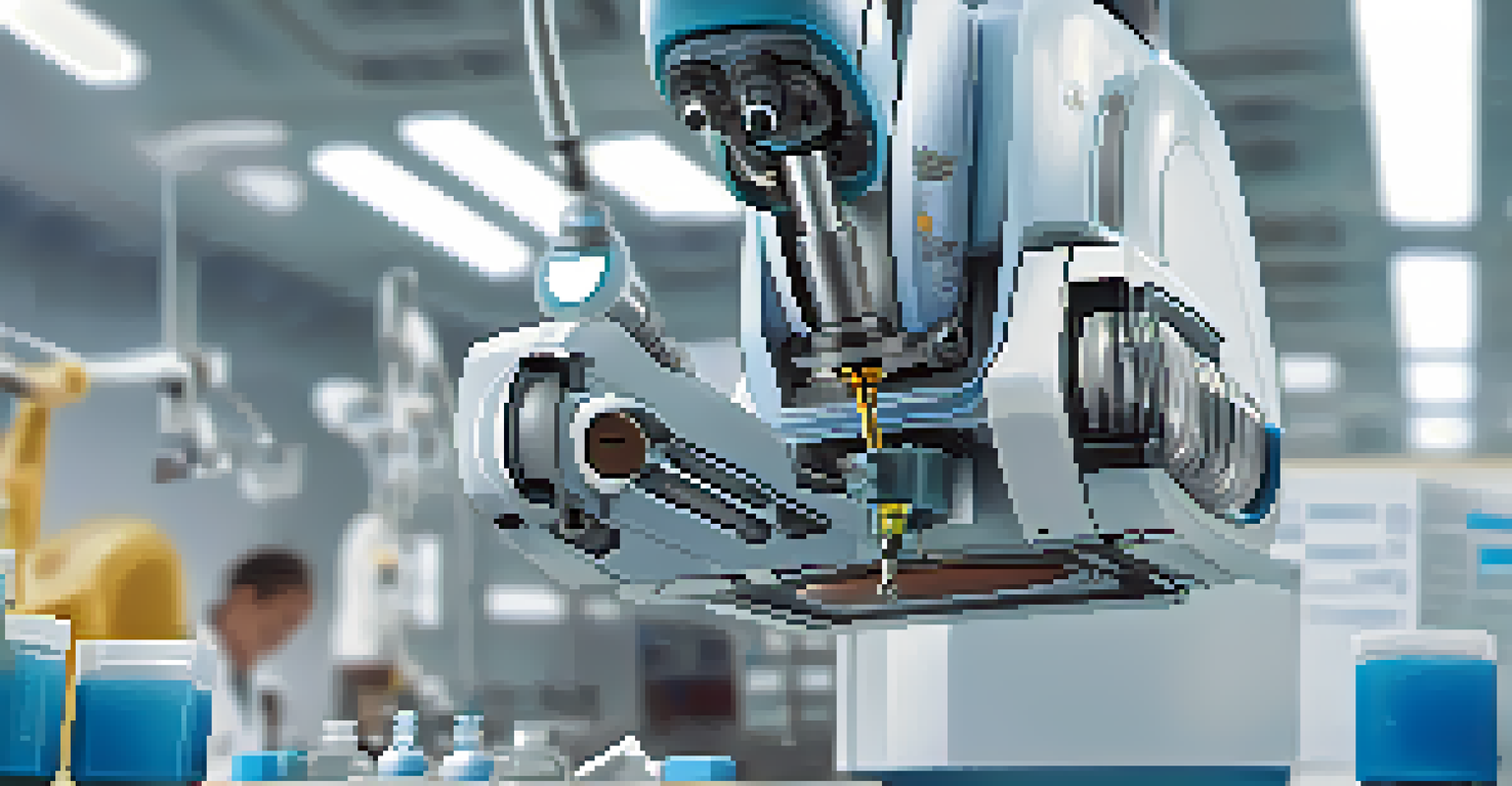The Role of Robotics in Modern Surgical Procedures

Introduction to Robotics in Surgery
Robotics in surgery has evolved significantly over the past few decades, moving from rudimentary applications to sophisticated systems that enhance precision and efficiency. Surgeons now have access to robotic-assisted tools that allow for minimally invasive procedures, reducing recovery times for patients. This shift not only improves surgical outcomes but also reshapes the entire approach to surgical education and training.
Surgery is the art of the physician. Robotic surgery is the art of the machine that enhances the skills of the physician.
One of the most notable advancements is the da Vinci Surgical System, which has become synonymous with robotic surgery. This remarkable system allows surgeons to perform delicate operations with enhanced visualization and dexterity, mimicking human hand movements while maintaining a steady grip. As surgeons adapt to these technologies, they find themselves equipped to tackle more complex surgeries that were once deemed too risky.
The integration of robotics into surgical practices is not just a trend; it's a revolution that promises to redefine the medical landscape. As we delve deeper into this topic, we will explore the benefits, challenges, and future potential of robotics in modern surgical settings.
Benefits of Robotic-Assisted Surgery
Robotic-assisted surgery offers numerous benefits, the most significant being enhanced precision. Surgeons can perform intricate procedures with less tissue damage, leading to shorter recovery times and reduced pain for patients. For example, in prostatectomies, robotic systems can allow for more precise movements, minimizing the risk of complications that can affect urinary function.

Another major advantage is the reduction in hospital stays. With traditional surgeries often requiring longer recovery periods, robotic techniques can enable patients to return home sooner, which not only improves their quality of life but also reduces healthcare costs. Additionally, many patients report experiencing less post-operative pain, which is a significant factor in their recovery process.
Robotic Surgery Enhances Precision
Robotic-assisted surgery allows for intricate procedures with enhanced precision, leading to reduced tissue damage and shorter recovery times.
Lastly, robotic systems can enhance the surgeon’s capabilities, allowing for improved ergonomics and reduced fatigue during lengthy procedures. This means that surgeons can maintain a high level of concentration and skill throughout the operation, leading to better overall outcomes.
Types of Robotic Surgical Systems
There are several types of robotic surgical systems currently in use, each designed for specific applications. The da Vinci Surgical System is perhaps the most well-known, used primarily in urology, gynecology, and thoracic surgeries. Its ability to provide 3D visualization and precise movements has made it a favorite among many surgeons.
The future of surgery is not just in the hands of the surgeon, but also in the technology that assists them.
Another type is the Flex Robotic System, which is designed for use in flexible endoscopy. This system allows for intricate procedures in hard-to-reach areas of the body, expanding the horizons of minimally invasive surgery. By utilizing flexible robotics, surgeons can navigate complex anatomical pathways more effectively.
Lastly, the Mako Robotic-Arm Assisted Surgery System is specifically tailored for orthopedic procedures like knee and hip replacements. This system helps ensure accurate implant placement, which can significantly enhance the longevity of orthopedic implants and improve patient outcomes.
Challenges in Implementing Robotic Surgery
Despite the many advantages of robotic surgery, there are challenges to its widespread implementation. One of the primary hurdles is the high cost associated with purchasing and maintaining robotic systems. Hospitals must weigh the benefits against the financial investment, which can be a significant barrier, especially for smaller facilities.
Training and education for surgical teams also pose a challenge. While robotic systems are designed to be user-friendly, surgeons still require extensive training to operate them effectively. This necessity for specialized training can create disparities in access to robotic surgery, with some regions lagging behind in adopting the technology.
Challenges in Adoption Persist
Despite its benefits, the high cost and need for specialized training pose significant barriers to the widespread implementation of robotic surgery.
Moreover, there can be a learning curve as surgeons transition from traditional methods to robotic-assisted techniques. It's crucial for healthcare institutions to provide ongoing support and training to ensure that their surgical teams can maximize the potential of robotic systems.
Patient Perspectives on Robotic Surgery
Patients often have mixed feelings about robotic-assisted surgery, primarily due to a lack of understanding about the technology. Many individuals are concerned about the presence of machines in such a personal and critical aspect of healthcare. Therefore, it's essential for healthcare providers to communicate effectively about the benefits and risks associated with robotic surgery.
Anecdotal evidence suggests that many patients appreciate the minimally invasive nature of robotic procedures, leading to quicker recoveries and less post-operative discomfort. For instance, patients undergoing laparoscopic gallbladder removal often report a smoother experience with robotic assistance, which can lead to higher satisfaction rates.
Ultimately, educating patients about the capabilities and safeguards of robotic systems can enhance their comfort and confidence in opting for these advanced surgical options. Transparent discussions between healthcare providers and patients are key to fostering trust in robotic-assisted procedures.
The Future of Robotics in Surgery
The future of robotics in surgery is bright, with ongoing research and development paving the way for even more advanced technologies. Innovations like artificial intelligence (AI) and machine learning are being integrated into surgical robotics, enabling systems to assist surgeons in real-time decision-making during procedures. This could lead to even greater precision and improved patient outcomes.
Moreover, as technology continues to evolve, we can expect to see more affordable robotic options becoming available. This increased accessibility could lead to wider adoption in hospitals of all sizes, ultimately benefiting more patients. With the potential to democratize access to advanced surgical techniques, the future of robotic surgery looks promising.
Future Innovations Are Promising
The integration of AI and telemedicine in robotic surgery is set to improve accessibility and precision, transforming surgical practices in the coming years.
As we look ahead, the integration of telemedicine and robotic surgery could also become more prevalent. Surgeons may have the ability to perform procedures remotely, expanding their reach and providing care to patients in underserved areas. This could fundamentally change the landscape of surgical care, making it more equitable and accessible.
Conclusion: Embracing Robotic Innovations in Surgery
In conclusion, robotics is revolutionizing the field of surgery, offering numerous benefits that enhance both patient care and surgical precision. While challenges remain, the potential for improved outcomes and the efficiency of robotic systems cannot be overlooked. As healthcare providers continue to embrace these innovations, we can expect to see a transformation in surgical practices worldwide.
The journey of integrating robotics into surgery is just beginning, and it promises to create new possibilities for surgical procedures. By investing in training, technology, and patient education, we can harness the full potential of robotic surgery.

As we continue to explore and innovate in this field, the future holds exciting prospects for both surgeons and patients alike. Embracing these advancements will ultimately lead to better health outcomes and an elevated standard of care.